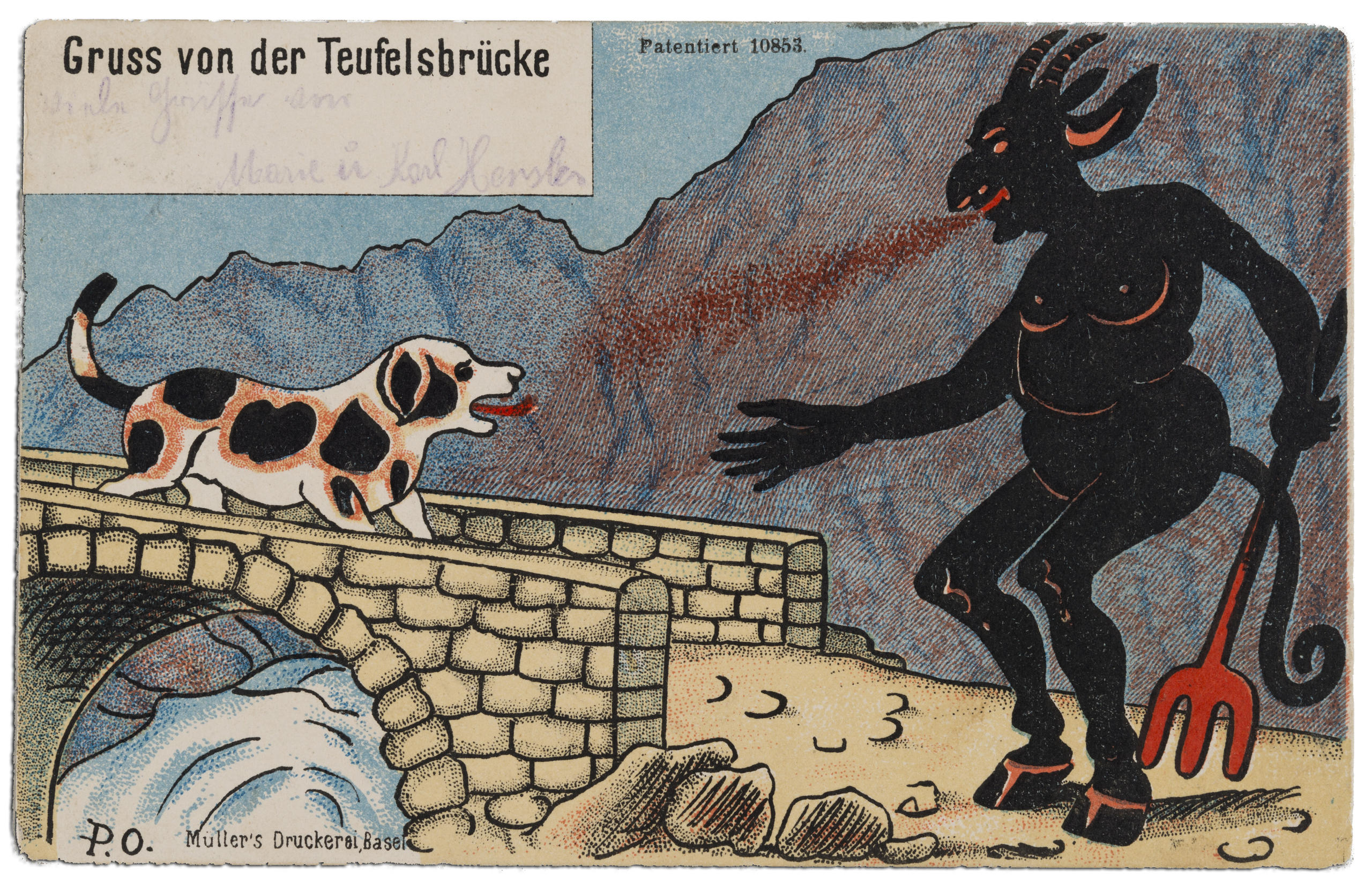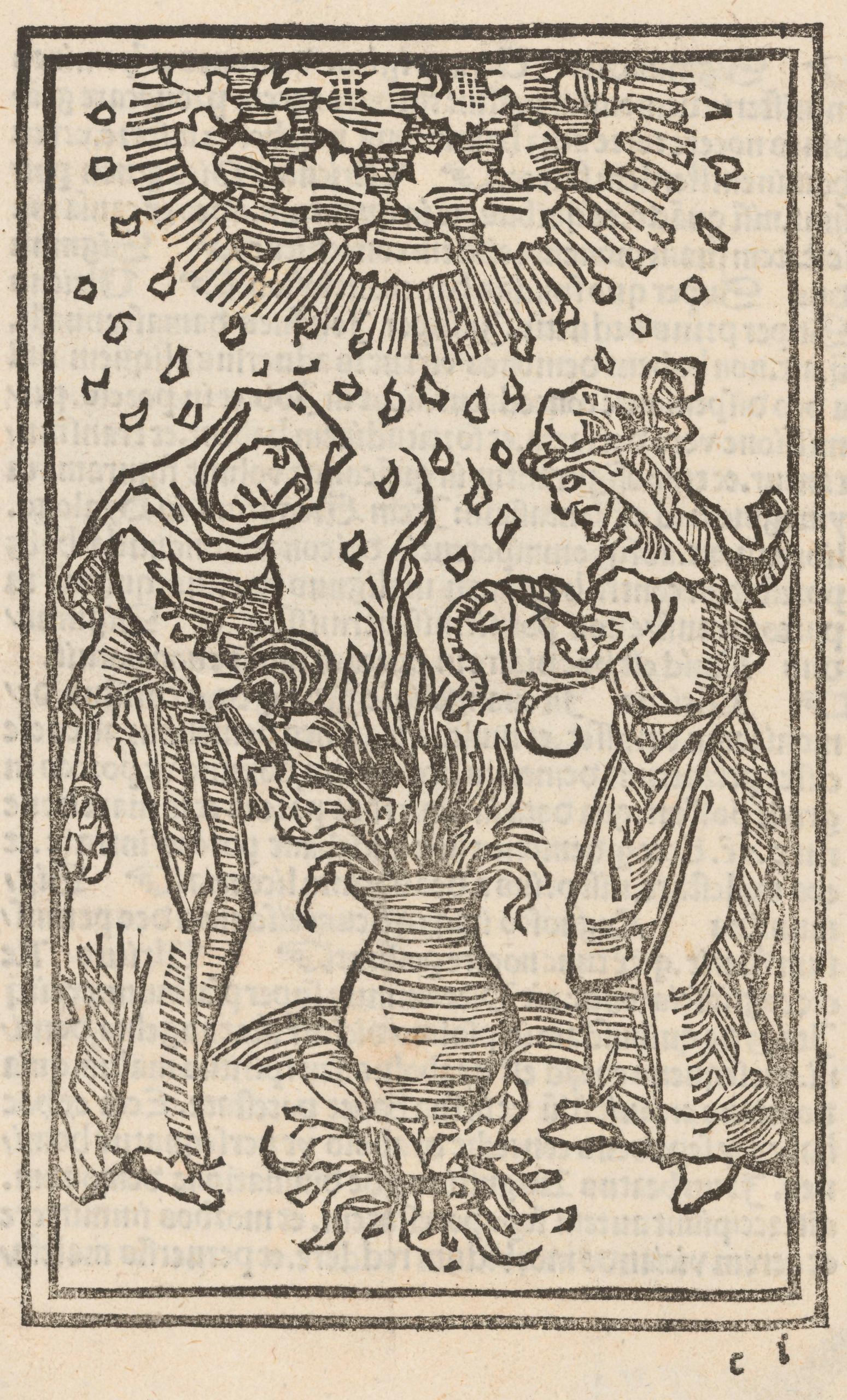
The stuff of legends in Zurich
Constant movement of cultures and ideas into Switzerland over the centuries has created a rich and varied folklore tradition, packed with ghosts, devils, witches and dragons.
Some of these stories are explored in an exhibition at the Swiss National Museum in Zurich, “Traditional Tales from the Alps”. In this video, curator Daniela Schwab introduces us to some of Switzerland’s most famous legends.
One of the most celebrated folk heroes is William Tell, the man who is said to have shot an apple on his son’s head rather than bow to a dignitary’s hat. In the exhibition, you can study various versions of the story and feast your eyes on a magnificent crossbow of the kind he might have used. Historical myths like this played a key role in shaping Swiss national identity well into the 20th century.

This brave fellow from canton Uri is only one of many characters in Swiss legends. These ancient tales reflect the diversity of Switzerland, its landscapes, mountains and valleys, towns and countryside. One tale in the exhibition speaks of the Devil’s Bridge, or Teufelsbrücke, which spans the Schöllenen Gorge in the Reuss valley in canton Uri. Legend has it that it was so hard to build the bridge that desperate townsfolk enlisted the help of the devil, who in return demanded the soul of the first person to cross it. A wily farmer is said to have tried to trick the devil by sending a dog across the bridge first. Furious, the devil plunged into the river with the animal. It is said that a white Maremma Sheepdog is still seen walking the bridge at night at the end of October, and that he is the devil still searching for the soul of the person who tricked him.

Punishing wickedness
Legends do not only talk about evil that has to be overcome, but also behaviour that has to be corrected, often with harsh punishments.
“Legends were meant to teach people that if they strayed from the path of normal behaviour, there would be drastic consequences,” Schwab explains.
So, for example, in the Blüemlisalp story, a selfish herdsman lives in plenty on his fertile alp, while the people in the valley below are starving. He refuses to share what he has and despises the despairing valley dwellers. As a punishment, the thriving alp transforms into a wasteland of rocks and ice.
Witches also take centre stage in this exhibition, perhaps because the Swiss hold the record for persecution. You can find out all about the witch of Belalp, who is said to have been burnt at the stake. Some say it was because she cheated on her husband with a sorcerer. The French-speaking area of Switzerland executed some 3,500 people, more than anywhere else in Europe per head of population. There was always a need to find someone to blame for disasters or epidemics, and as Schwab points out in the video, there was no escape for suspects. They were tortured until they “confessed” and were then executed.

Legends are kept alive
The Swiss no longer carry charms and weapons to ward off the Toggeli creature that haunted their dreams, but they seem intent on keeping legends alive in the many folklore festivals that pepper the social calendar. For example, the witch of Belalp is commemorated with a unique annual ski race in which participants tear down the slopes of Belap in canton Valais dressed as witches. There are also plenty of noisy processions to drive away the spirits of winter, like the New Year’s Clauses in Appenzell.
In Interlaken, they celebrate light’s victory over the darkness of the night in the Harder-Potschete procession, in which masked people representing the cult of the dead march in the streets of Interlaken to spark mock fear and dread among the spectators. On the same day in April every year, a snowman, the Böögg, is ignited in a ceremony in Zurich. The type of summer we are likely to have is said to depend on how long it takes the Böögg’s head, which is stuffed with explosives, to explode.

More
A psychic exploding snowman? Welcome to Sechseläuten
Legends also live on in the plays, films and TV series made about them, such as the eponymous Alpine fable, Sennentuntschi, made into a film by Michael Steiner in 2010. In 1940, Hollywood produced an animated cartoon titled Popeye meets William Tell, in which Popeye plays the son and has a can of spinach shot off his head. The legend was also dramatised in a UK TV series from 1958, starring Conrad Phillips as Tell, and in a 1960 Hollywood movie.
The Swiss have always been fascinated by things that go bump in the night and, on the day of my visit to the Swiss National Museum, children sat enthralled at the stories they were listening to. The educative role of legends may have diminished but their long-term survival seems to be a given.

















![The four-metre-long painting "Sonntag der Bergbauern" [Sunday of the Mountain Farmers, 1923-24/26] had to be removed by a crane from the German Chancellery in Berlin for the exhibition in Bern.](https://www.swissinfo.ch/content/wp-content/uploads/sites/13/2025/12/01_Pressebild_KirchnerxKirchner.jpg?ver=8f77363a)












You can find an overview of ongoing debates with our journalists here . Please join us!
If you want to start a conversation about a topic raised in this article or want to report factual errors, email us at english@swissinfo.ch.